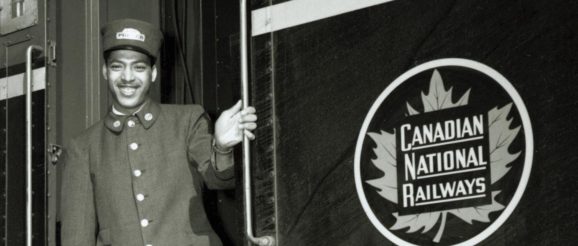Celebrating Black Innovation: The Activism of the Sleeping Train Porters | Centre for Social Innovation

In 1885, Sir John A MacDonald proclaimed the importance of the Canadian Pacific Railway, stating that “we are made one people by that road, that that iron link has bound us together in such a way that we stand superior to most of the shafts of ill-fortune”. Although he imagined that the railway would forge a national identity for Canadians, he couldn’t have known that some of its lowest paid employees, would have such a significant impact on Canadian history. The train porters of the Canadian Railway, made up of predominantly Black men, were underpaid and overworked, but made great strides in the fight for racial justice and labour rights in Canada.
The Canadian Immigration Act of 1910 prohibited immigration by “anyone belonging to any race deemed unsuited to the climate or requirements of Canada.” As a result of this, Black immigration into Canada in the early 20th century was limited to a quota of 100 people annually. Many of the people allowed into the country as part of this quota were directed to the railways, one of the few industries that hired Black men at the time. The profession of “sleeping train porter” was established by industrialist George Pullman in the 19th century; Black men who were looking for work after the abolition of slavery were hired to assist passengers on trains. Porters were expected to do everything from carrying luggage to checking tickets, shining shoes and turning down beds in sleeper cars. They received low pay, were not permitted to be a part of the train conductor’s union, and did not have the opportunity to be promoted. However, this profession became the cornerstone of many Black communities in Canada.
In addition to the long, difficult hours that often left-them sleep-deprived, many of the train porters became involved in lobbying efforts to both improve working conditions, and to advocate for better immigration policies in Canada. In 1954, many train porters were a part of the first delegation of Black Canadians to meet with members of the federal cabinet. Specifically, they met with then-immigration minister Walter Harris to demand change in regards to Canada’s discriminatory immigration policies. Cecil Foster, a Canadian journalist who has written about the untold history of Canada’s train porters, wrote that “The train porters turned Canada black, brown, and a host of other shades.”
The train porters also helped to kickstart the work of many important civil rights activists in Canada. Stan Grizzle, who worked twenty years as train porter, went on to become one of the first Black people to run for political office in Canada, and eventually became a citizenship judge in later life. But many of the men who worked as train porters will not have their names recorded in the history books. In fact, the train porters were regularly called “George” after George Pullman, meaning that their individuality was essentially erased while they were on the job. But as Cecil Foster wrote, despite the obstacles that they faced, “the sleeping car porters sacrificed themselves and all they had, figuratively speaking, to put a stick in the wheels of a Canada headed in a different direction”.
To learn more about sleeping car porters check out The Road Taken, a documentary on the National Film Board website.
